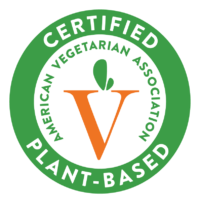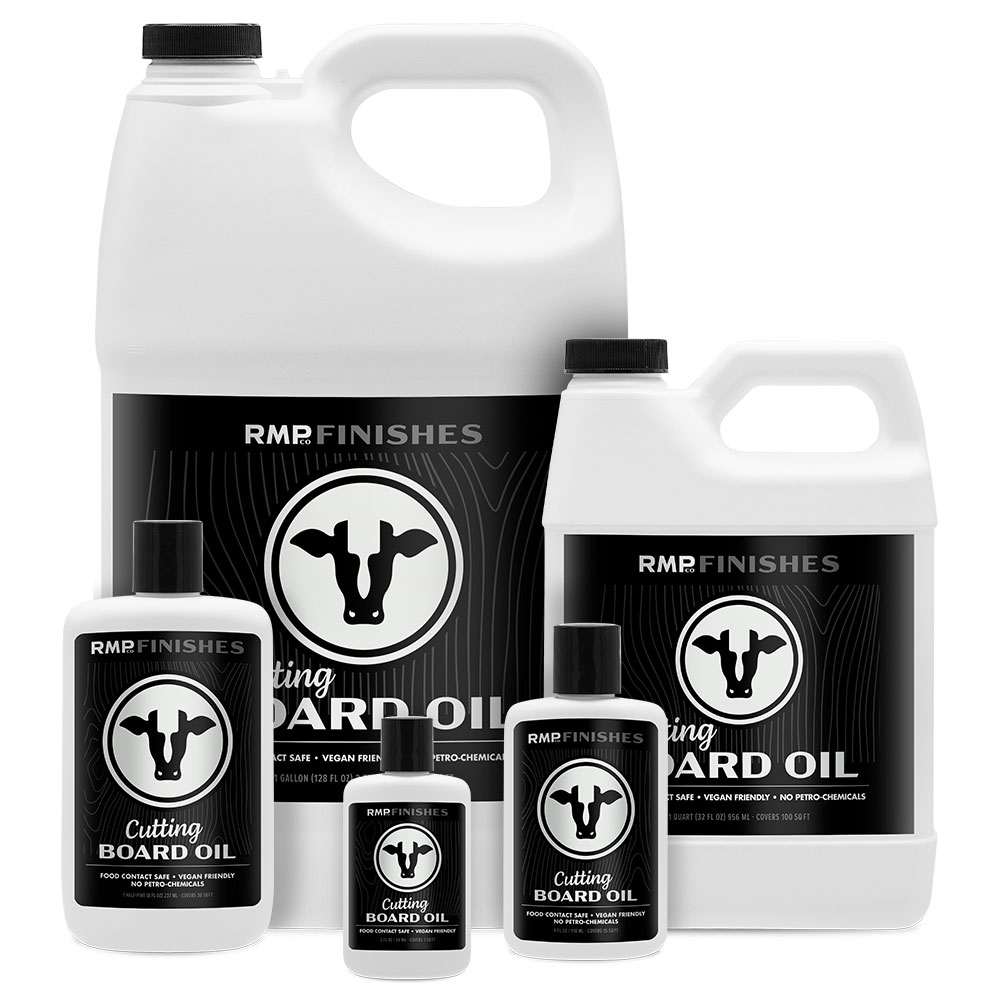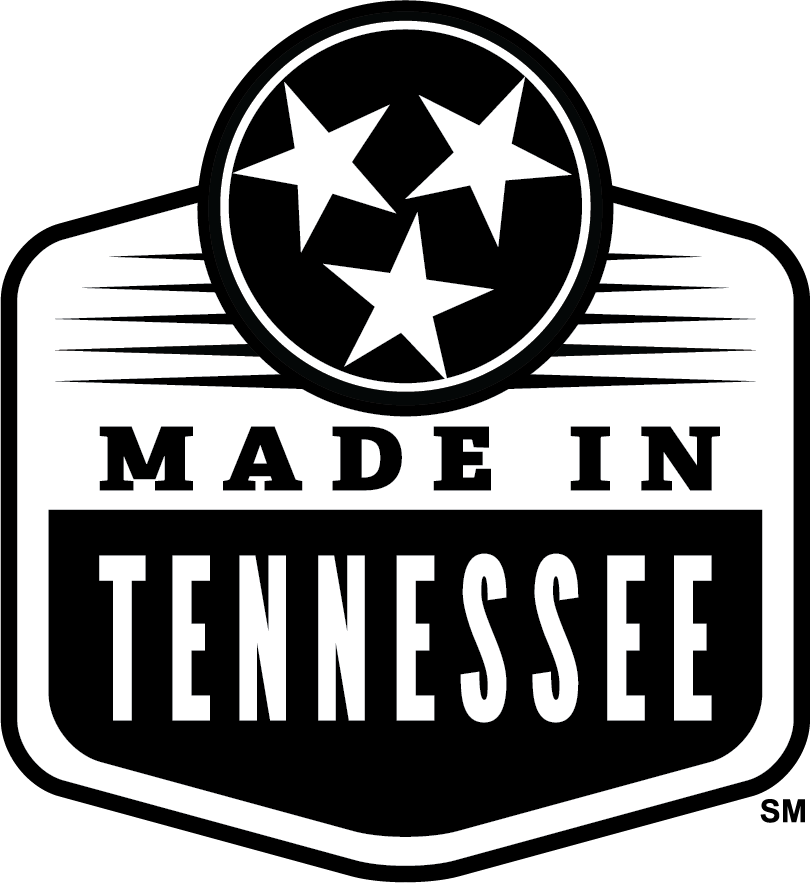Keep your customers’ wooden cutting boards, bowls, utensils, and charcuterie boards in top condition with RMP Finishes Cutting Board Oil. After reviewing the market, we found that most competing products rely on mineral oil, a petroleum-derived substance. In response, we developed Cutting Board Oil as a 100% plant-based, premium alternative. This formulation conditions, seals, and protects wooden food contact surfaces, offering retailers a high-quality, eco-friendly product their customers can trust and return to again and again.
Cutting Board Oil
From: $4.99
Product Description
RMP Co Finishes Cutting Board Oil
A Sustainable, Plant-Based Wood Finish for Retailers and Consumers
Why Stock It:
- Meets growing consumer demand for eco-friendly, food-safe products.
- Natural alternative to petroleum-derived mineral oil and cooking oils.
- Shelf-stable, reducing spoilage and returns.
- Enhances retailer credibility with premium, clean-label offerings.
Product Features & Benefits
All-Natural Ingredients:
- Palm Fruit Oil (RSPO Certified) – Rich in vitamin E, antifungal, and sustainable sourcing.
- Refined Almond Oil – Deeply penetrates wood fibers for long-lasting conditioning.
- Grapefruit Seed Oil – Natural antibacterial and antifungal protection.
- Rice Bran Wax – Light protective barrier, adds subtle sheen.
- Castor Wax – Enhances antimicrobial properties and durability.
Performance:
- Penetrates deeply into all wood species for superior protection.
- Low-luster, hand-rubbed finish highlights wood grain without altering natural colors.
- Resists rancidity for shelf-stable storage.
- Food-contact safe; meets FDA standards for cutting boards, bowls, and utensils.
Application:
- Easy-to-use hand-rub formula: apply, let absorb, buff excess.
- Suitable for cutting boards, charcuterie boards, serving trays, wooden utensils, and bamboo products.
Wholesale Advantages
For Distributors & Retailers:
- Differentiates your catalog with plant-based, health-conscious products.
- Appeals to eco-friendly and food-safe market segments.
- Drives repeat purchases: customers maintain boards, utensils, and bowls regularly.
- Premium product story supports higher price points and margins.
Packaging & Formats:
- Available in retail-ready bottles and bulk options.
- Shelf-stable for ease of inventory management.
- Supports clear point-of-sale messaging for consumer education.
Why RMP Finishes Cutting Board Oil:
- Natural, sustainable, and vegan-friendly alternative to mineral oil.
- High-quality ingredients backed by traceable sourcing.
- Easy to sell: meets modern consumer demands and retail expectations.
- Protects wood, preserves surfaces, and strengthens your product lineup.
Frequently Asked Questions about Cutting Board Oil
“How often should I reapply Cutting Board Oil?”
Whenever the wood appears “dry” or is losing its resistance to water and washings are good indicators it’s time for a recoat. If you use your board daily, expect to reapply once a month. If you use your board frequently, expect to reapply every few months. If you use your board rarely, expect to reapply once a year.
“Can I apply Cutting Board Oil over a mineral oil-based finish?”
Yes, however, we do recommend thoroughly cleaning the surface prior to application. Hot water and soap or our Citrus Solvent are good options.
“Can I use Cutting Board Oil on epoxy/wood combinations?”
Yes, most definitely! The Cutting Board Oil will go right over the epoxy giving it a nice sheen while simultaneously conditioning the wood areas.
“Can I use Wood Wax over Cutting Board Oil?”
You can use our Wood Wax over Cutting Board Oil, but it is not necessary. Keep in mind though, that it would be better to use the Wood Wax to maintain the cutting board if it had been finished with the Wood Wax. If you’d like to get a higher sheen and more durable finish, then consider using just the Wood Wax.
“What’s the difference between Cutting Board Oil, Wood Wax, Half & Half, etc?”
This is an excellent question! While all these products vary in different ways, the main perspective to view them from is permanence vs convenience. Our Cutting Board Oil is very convenient to apply and reapply. It’s quick and easy! However, it is not as durable as the Wood Wax or Half & Half. Those products are more permanent but require more upfront time in application and curing of the finish. Rest assured, all of these options will perform well and protect your wood!
“Can I use your tung oils over Cutting Board Oil?”
We do not recommend using any of our tung oil or hemp oil finishes over the Cutting Board Oil. This is because those oils are drying oils whereas Cutting Board Oil is made with non-drying oils. The two natures of these oils will conflict with one another, so it’s best to avoid mixing them. That being said, you can apply the Cutting Board Oil over the tung oils/hemp oil after they have fully cured. Take note that future maintenance will be with the Cutting Board Oil unless it is completely removed from the surface before maintaining with the tung oils/hemp oil.
“Is your Cutting Board Oil truly plant-based? Or only mostly plant-based?”
Our Cutting Board Oil is 100% plant-based. It’s even been certified by the American Vegetarian Association as Plant-Based!

Our Cutting Board Oil is certified as plant-based by the American Vegetarian Association.
“It says you’re Cutting Board Oil is made with ‘Refined Almond Oil’ is there concern for an allergic reaction?”
Some may be rightfully concerned about almond oil as an allergen. While we are not medical professionals and recommend asking the advice of your doctor before use of our product it is worth noting that highly refined oil derived from almonds is exempted from being classified as a major food allergen because it lacks the proteins that typically trigger an allergic response. For more concerning this topic click here and here.

Our Cutting Board Oil is certified as plant-based by the American Vegetarian Association.
Why We Didn’t Use Mineral Oil
There are many resources that promote and brands that use mineral oil as a sealant on cutting boards. After researching heavily into food-grade mineral oil, we decided to not use it in our cutting board oil. This section explains why.
Mineral oil is a product produced during the refining process of crude petroleum. As it is refined, different levels of mineral oil and other petrochemicals are filtered off. These levels of mineral oil fall under different grades and have various classifications. Crude petroleum is turned into things like gasoline, mineral spirits, and mineral oil. Untreated, or mildly treated mineral oils are classified as carcinogenic to humans (Source, Source) whereas highly treated mineral oil, what is considered food grade is “not classifiable as to its carcinogenicity to humans” by the International Agency for Research on Cancer (IARC) which is a group under the World Health Organization (WHO) (Source). This study was last conducted in 1984 (Source) with its findings confirmed most recently in 2012 (Source) With this in mind, we decided it would be better to not include a substance that changes in carcinogenicity depending on how it is refined.
Oils become rancid over time when exposed to air, this process is known as oxidization. During the refinement process of food-grade mineral oil, vitamin E which is naturally found in mineral oil and aids resistance to oxidization, is removed. Thus, it is noted by the FDA that adding antioxidants such as vitamin E to help prevent oxidization (turning rancid) is allowed (Source).
Food Grade (white) Mineral Oil is classified as suitable to be used as a direct additive to food (Source) as well as indirect contact with food by the FDA (Source). Food grade mineral oil is used widely in the processing, packaging, and preserving of food (Source). Therefore, it is widely present in our everyday lives from the products we use through contact or ingestion, meaning our exposure is more than what is taken intentionally. It is also used as a laxative when taken in higher doses by blocking the absorption of water in the intestines and if used for prolonged periods can reduce the absorption of essential vitamins and minerals for the human body. There is growing concern over the bioaccumulation of mineral oil hydrocarbons (MOH) in the body (lymph nodes, liver, spleen) and the toxicological effects of mineral oils found in food packaging and food. (Source, Source, Source) However, there are also conflicting opinions on which MOH are of concern and which are not.
In light of all this information and in an effort to provide an effective and affordable alternative to mineral oil, we decided to not use mineral oil in our Cutting Board Oil and instead choose to use plant-derived ingredients.
What We Did Use
The unique properties and characteristics of each ingredient in Cutting Board Oil from the Real Milk Paint Co. make it the best cutting board oil for food contact and food preparation surfaces. The advantages conveyed by these vegan-friendly ingredients include:
- Grapefruit Seed Oil: This powerful essential oil boosts the anti-fungal and anti-bacterial properties of our Cutting Board Oil. It is rich in antioxidants, furthering the overall shelf stability and resistance to going rancid (Source) (Source) (Source). Our grapefruit seed oil is cold pressed, refined, and generally recognized as safe for direct human consumption by the FDA (Source).
- Palm-Fruit Oil: Not to be mistaken with “palm kernel oil”, this oil is extracted from the fleshy part of the fruit of palm trees. Palm-fruit oil has potent antifungal properties that help you better maintain your wooden cutting board. It is also known to be rich in vitamin E, an essential antioxidant naturally aiding in rancid resistance (Source). Palm oil is also FDA-approved for food contact (Source). The Real Milk Paint Co. only uses palm fruit oil that carries RSPO Certification, otherwise known as Roundtable on Sustainable Palm Oil, guaranteeing the sustainability and traceability of the palm fruit oil production throughout the supply chain. RSPO-IP (Identity Preserved) certification is one of four certification levels offered by the RSPO and carries the highest and strongest level of sustainable guarantee with traceability of each lot of palm fruit oil back to the field of origin. With Identify Preserved sustainable palm fruit oil, the entire batch of palm fruit oil is from a single identifiable certified source and kept separate from all non-certified batches.
- Refined Almond Oil: This all-natural nut oil offers a pleasant natural scent to the formulation while helping it soak into the surface of your wood cutting board, bowl, or utensils. This deeply penetrates for long-term moisture and conditioning. Refined Almond Oil is approved by the FDA for food contact as it is an edible oil. (Source) Some may be rightfully concerned about almond oil as an allergen. While we are not medical professionals and recommend asking the advice of your doctor before use of our product it is worth noting that highly refined oil derived from almonds is exempted from being classified as a major food allergen because it lacks the proteins that typically trigger an allergic response. For more concerning this topic click here and here.
- Rice Bran Wax: This ingredient in Cutting Board Oil comes from the husk or outer shell of individual rice kernels. It provides a light protective barrier against spills and moisture while also enhancing the sheen of the final finish. Rice Bran Wax is approved by the FDA to be used in contact and in food and can be commonly found in things like candy and chewing gum (Source).
- Castor Wax: Derived from the castor bean, this plant based wax is suitable for use on leather, wood, skin, and more. Castor wax offers antimicrobial properties and delivers excellent protection against organic materials.
Want something a bit more technical? Feel free to view and download our Cutting Board Oil Safety Data Sheet.

